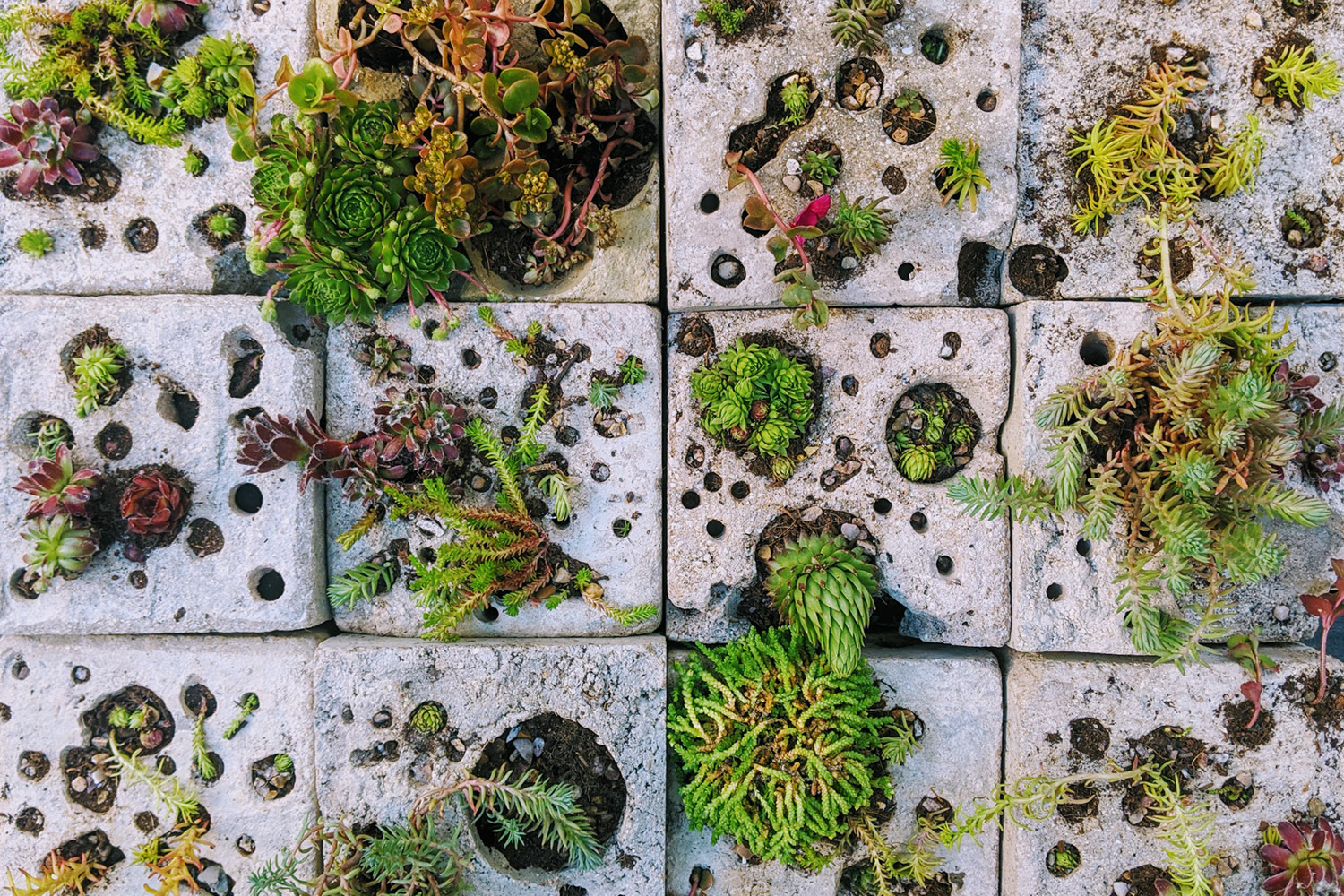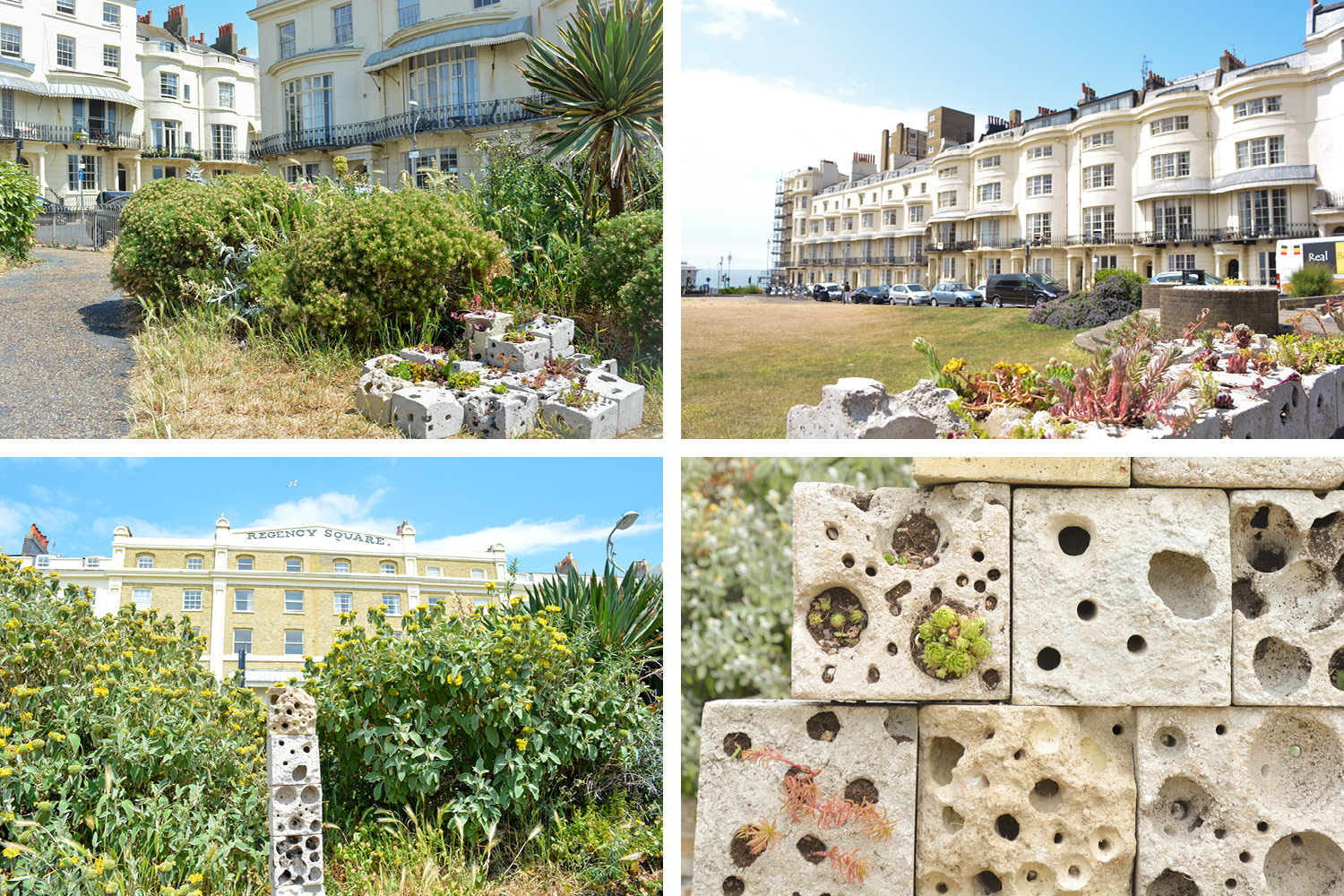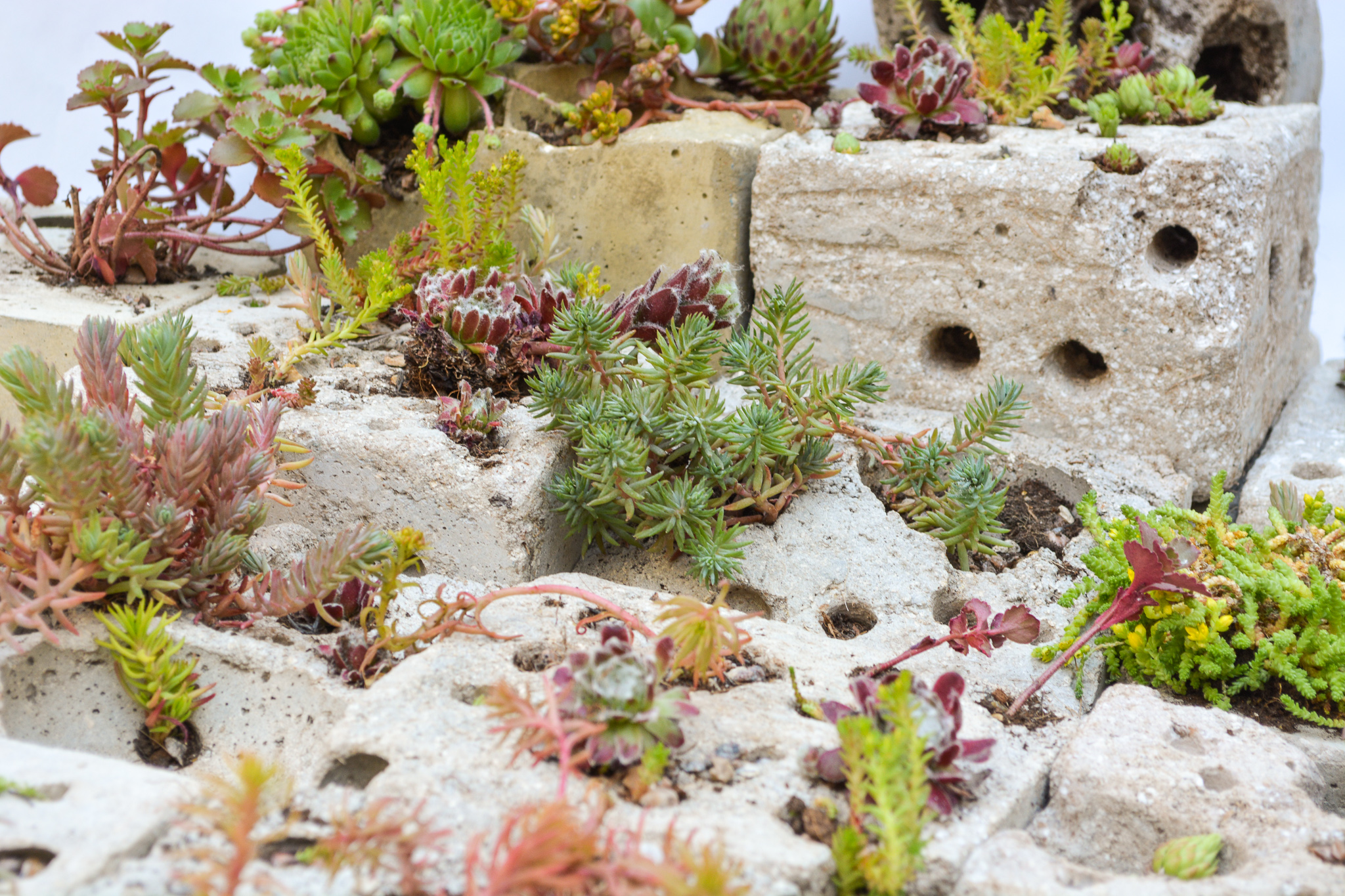Living Blocks

Useful information
- Team members
- Lawrence Parent
- Country
- United Kingdom
- Keywords
- distributed open-source biodiversity human-nature natural city greening the grey
Short Description
Recipe to make bio-receptive blocks that support natural colonisation or be prepopulated with plants
Detailed Description
Living Blocks is an open-source recipe designed to produce blocks that can support plant and insect life. Using inspiration from the porous structure of rare limestone formations called tufa, Living Blocks uses waste fruit, vegetable and natural aggregates to produce a similar porous structure in a cement-based alternative.
The project explores the ways in which we can build with nature to increase the biodiversity in cities whilst also developing our connection to nature. Through interviewing experts in ecology, conservation and art, I discovered that in order to increase biodiversity in cities we need to alter the way we build. Currently, cities are built with clean, smooth, regular shaped surfaces and spaces, with little focus on natural life. Living blocks aims to provide a basic open-source process people can use and adapt to build blocks or other shapes that provide complex, textured, bio-receptive surfaces that could provide rich ecosystems in urban spaces.
?
Project Details
- Does your design take social and cultural challenges and human wellbeing into consideration?
Countless reports highlight the benefits of the human-nature relationship, however, the current model for the construction of new buildings and cities centres around the efficiency of maintenance with little focus on the quality of life. This results in the construction of clean, smooth, regular-shaped surfaces and spaces, with little focus on natural life. As a result of the shortfalls of this industry, I have designed an easy process to make blocks that will provide flourishing biodiverse ecosystems as well as adding interesting aesthetic value to build spaces. These blocks/ adapted shapes could be used for a range of applications such as cladding, garden walls, waymarkers etc.
- Does your design support sustainable production, embodying circular or regenerative design practices?
The recipe encourages people to reuse any aggregates they might have lying around such as crushed terracotta, rubble etc. or source materials locally such as shells, shingle or sand. The recipe also encourages people to use spoilt fruit and vegetable in order to make voids in concrete. Whilst the use of cement is bad and not sustainable, there are many environmentally friendly alternatives, that I intend to experiment with as the UK lockdown is lifted. The blocks are designed to be taken over by nature so whilst it won't degrade in the same way other materials do, it will become hosts to 100s of invertebrates and plant species without causing any damage to the environment.
- Does your design use principles of distribution and open source?
The project is hosted on the collaborative design platform, Wikifactory, and will soon also be uploaded to Instructables. I strongly encourage people to have a go at making their own blocks and sharing their work on social media. I am also hoping to collaborate with conservationists and see if I can begin to implement the project on a city-wide scale.
- Does your design promote awareness of responsible design and consumption?
The main aim of the project is to improve biodiversity and the human-nature connection in cities. Whilst the blocks could be adapted and designed for mass production, only a few blocks are needed to have an impact over a 100m radius. Therefore, mass-producing the blocks is really not required and making them yourself is far more valuable and enjoyable.
Images


